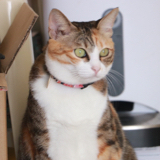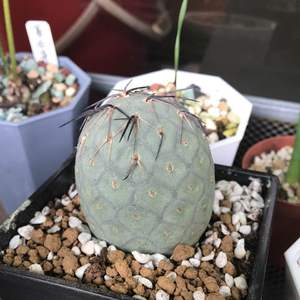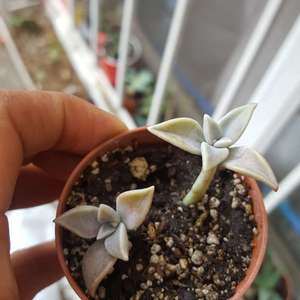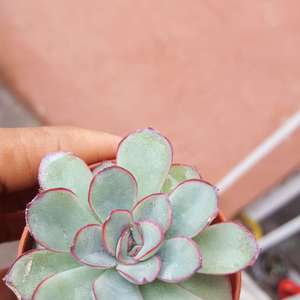文章
Miss Chen
2018年06月25日

1.Aeonium
The majority of us can't grow Aeoniums year round, in the garden. Don't let that stop you from enjoying them, though. Although they have the familiar rosettes of Hens and Chicks, these quirky succulents are so waxy and shiny, they almost look artificial. In warm climates, they can grow into shrubs. Just imagine coming across a Hens and Chicks at eye level.
As with many of the succulents listed here, Aeonium makes a good houseplant. You can give it a summer vacation outdoors and enjoy it indoors during the winter, it's prime growing season. (USDA Hardiness Zones 9 - 11)
2.Agave
You may be familiar with the giant Agave Americana, with its dangerous, serrated leaves. It's impressive, but not suited to most gardens. There are better choices among the dozens of Agave species. There are even some that can tolerate freezing temperatures.
3.Crassula
With about 350 species in this genus, there's a lot of variety. Jade plants, Crassula ovata, (syn. C. argentea and C. portulaca) are probably the most familiar, but there are also the stacked types, Crassula perforata, that look a little like paper chaines. Colors range from deep green to creams and yellows, silvery gray and shade of red.
In frost free climates, jade plants will form small shrubs. There's are now some very pretty variegated varieties available, which need full sun to retain their colors.
The staked varieties lend themselves to use in hanging containers and over walls. You'll love this little Crassula alpestris. The triangular leaves form stacked pinwheels. They are a pinkish-red during the winter, into spring. At the end of summer, you may get spikes of small white. They can handle some shade and like their soil on the dry side.
4.Echeveria
Another succulent that forms flower-like rosettes atop long stalks. Echeveria resembles Hens and Chicks and can be very ornamental. The leaves are more delicate than they appear and can be easily injured in garden beds. They are perfect for containers and hypertufa.
5.Euphorbia
This is a large genus with a great deal of variety. Not all Euphorbia are succulents but they do all have a milky sap that can be irritating. Be careful about rubbing your eyes after collecting seeds.
The majority of us can't grow Aeoniums year round, in the garden. Don't let that stop you from enjoying them, though. Although they have the familiar rosettes of Hens and Chicks, these quirky succulents are so waxy and shiny, they almost look artificial. In warm climates, they can grow into shrubs. Just imagine coming across a Hens and Chicks at eye level.
As with many of the succulents listed here, Aeonium makes a good houseplant. You can give it a summer vacation outdoors and enjoy it indoors during the winter, it's prime growing season. (USDA Hardiness Zones 9 - 11)
2.Agave
You may be familiar with the giant Agave Americana, with its dangerous, serrated leaves. It's impressive, but not suited to most gardens. There are better choices among the dozens of Agave species. There are even some that can tolerate freezing temperatures.
3.Crassula
With about 350 species in this genus, there's a lot of variety. Jade plants, Crassula ovata, (syn. C. argentea and C. portulaca) are probably the most familiar, but there are also the stacked types, Crassula perforata, that look a little like paper chaines. Colors range from deep green to creams and yellows, silvery gray and shade of red.
In frost free climates, jade plants will form small shrubs. There's are now some very pretty variegated varieties available, which need full sun to retain their colors.
The staked varieties lend themselves to use in hanging containers and over walls. You'll love this little Crassula alpestris. The triangular leaves form stacked pinwheels. They are a pinkish-red during the winter, into spring. At the end of summer, you may get spikes of small white. They can handle some shade and like their soil on the dry side.
4.Echeveria
Another succulent that forms flower-like rosettes atop long stalks. Echeveria resembles Hens and Chicks and can be very ornamental. The leaves are more delicate than they appear and can be easily injured in garden beds. They are perfect for containers and hypertufa.
5.Euphorbia
This is a large genus with a great deal of variety. Not all Euphorbia are succulents but they do all have a milky sap that can be irritating. Be careful about rubbing your eyes after collecting seeds.
0
1






















